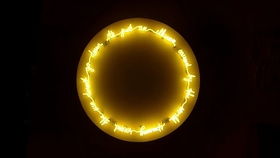Content:
Fishing among the shoreline weeds can be a challenging yet rewarding experience. The dense underbrush and tangled vegetation can make it difficult to spot fish, let alone cast your line effectively. However, with the right techniques and a bit of patience, you can turn this obstacle into an advantage. Here are some proven techniques to help you master the art of fishing among the岸边杂草.

Choose the Right Equipment
The first step in successful shoreline weed fishing is to equip yourself with the right gear. Here are some essential items to consider:
Fishing Rod and Reel: A medium-heavy action rod paired with a reliable reel is ideal for handling the thick vegetation and strong fish. A baitcasting reel is often preferred due to its ability to cast long distances and handle heavy lines.
Line: Use a braided line for its strength and abrasion resistance. Braided line also has less stretch, which can be beneficial when fighting fish in dense weeds.
Lures and Baits: Soft plastics, jigs, and spinnerbaits are all effective in weedy environments. Match your lure to the species you're targeting and the conditions of the water.
Select the Best Location
Not all shoreline weeds are created equal. Look for areas where the weeds are dense but not too thick, as these spots are often preferred by fish. Here are some tips for finding the best locations:
Edge of the Weeds: Fish often hang out along the edge where the open water meets the weeds. This is a prime spot to cast your line.
Clearing in the Weeds: Sometimes, there are small clearings within the dense vegetation where fish like to congregate. These spots can be like oases in the middle of a sea of weeds.
Deeper Water: If the weeds are too thick to fish in, look for deeper water nearby. Fish may move into deeper water to escape the dense vegetation.
Master the Cast
Casting in weedy areas requires precision and control. Here are some tips to improve your casting technique:
Longer Casts: Cast further out to avoid the weeds as much as possible. This gives you more room to work with your lure.
Toss the Line: Instead of throwing the line straight, use a wrist toss to avoid snagging the weeds. Toss the line slightly to the side to keep it away from the dense vegetation.
Use a Floating Line: A floating line can help you keep your lure above the weeds. It's also easier to cast with a floating line, which can be an advantage in weedy conditions.
Work the Lure Effectively
Once you've cast your line, it's time to work the lure to attract fish. Here are some techniques to consider:
Slow and Steady: Move your lure slowly through the weeds. Fish often strike when a lure is moving slowly, especially in weedy areas.
Snap and Pause: Use a snap and pause technique with your lure. Snap it through the weeds and then pause for a few seconds to allow the fish to react.
Change Directions: Occasionally change the direction of your lure to mimic the natural movement of prey. This can trigger strikes from fish that are used to foraging in weedy environments.
Be Patient and Persistent
Fishing among the shoreline weeds can be frustrating at times. Fish may be slow to bite, or you may end up with more weeds on your line than fish. Here are some tips to stay persistent:
Adjust Your Approach: If you're not getting bites, try changing your lure, color, or retrieve speed. Sometimes, even a small adjustment can make a big difference.
Stay Positive: Maintain a positive attitude and don't get discouraged by setbacks. The best catch often comes after the longest wait.
Practice Your Rigs: Practice removing weeds from your line and rigging your tackle. This will help you stay focused and efficient when you're out on the water.
By following these techniques, you'll be well on your way to mastering the art of fishing among the shoreline weeds. Remember, patience and persistence are key, and with time, you'll become a seasoned pro at navigating the challenges of weedy waters. Happy fishing!












